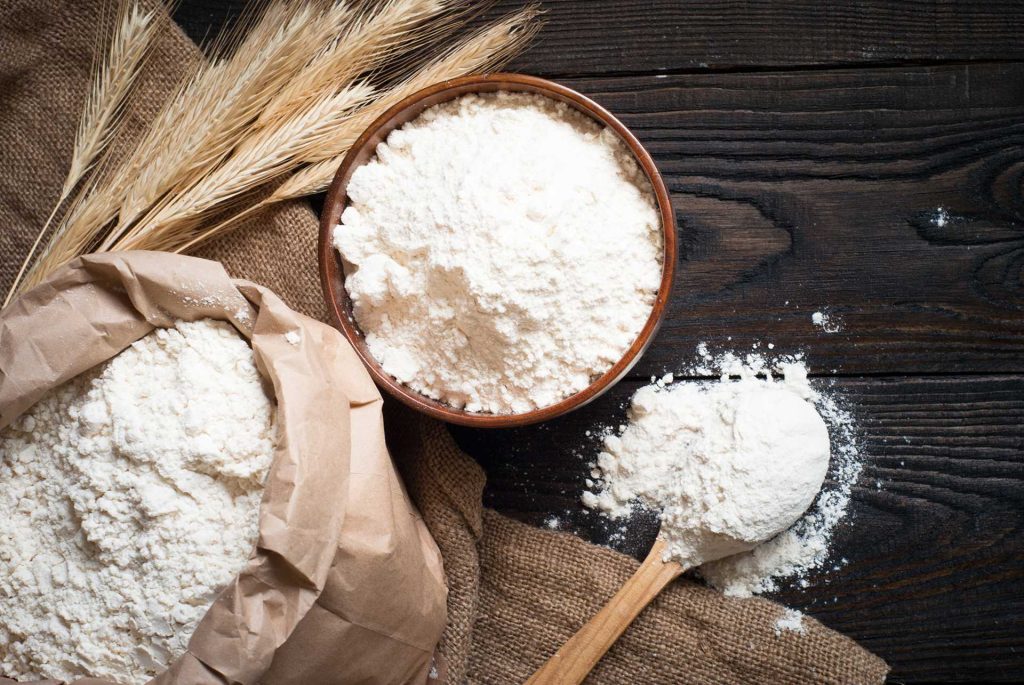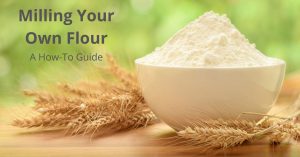There are several advantages to using freshly milled whole grain flour in baking, making it a wise decision for any amateur baker. Whole grain flour can be a delightful and simple method to include more whole grains in your diet due to the extra nutrients, improved digestion, lower glycemic index, flavour, and adaptability.
Whole grain flour is prepared from the entire grain, including the bran, germ, and endosperm, and is therefore nutrient-rich. This implies that it includes all of the nutrients, including fibre, B vitamins, and minerals like iron and zinc, that are present in the grain. In contrast, refined flour lacks many of these nutrients because the bran and germ have been removed. You may increase the nutritional value of your baked goods by using milling your own whole grain flour using one of our excellent Australian stone grain mills.

Better for digestion
Whole grain flour’s fibre content can aid in better digestion and reduce constipation. This is due to fiber’s role in bulking up the stool and facilitating easier transit through the intestines.
Lower glycemic index
A food’s glycemic index (GI) indicates how rapidly it can elevate blood sugar levels. Blood sugar levels might jump and then drop as a result of high GI foods, such as refined flour, which can result in weariness and cravings. Whole grain flour, in contrast, has a lower GI, which results in a slower, more gradual increase in blood sugar levels. This may lower your chance of developing diabetes and help you feel fuller for longer.
Flavour
Whole grain flour has a nutty, slightly earthy flavour that can give baked items more depth and complexity. You can give your dishes a new layer of taste and make your baked goods stand out by adding whole grain flour.
Versatility
Whole grain flour is versatile; it may be used to make a range of baked items, such as bread, cakes, cookies, and more. Depending on the flavour and texture you want, you can use it alone or in combination with refined flour.
Differences to Consider Compared to Store Bought Flour
It’s crucial to keep in mind that whole grain flour can act differently than refined flour when using it in baking. For instance, it could absorb liquid differently and might need extra leavening ingredients, such yeast or baking powder. It’s a good idea to start by replacing a tiny portion of your recipes’ refined flour with whole grain flour, and then gradually increase the proportion as you get more accustomed to the unique qualities of whole grain flour.
Shelf Life
The freshness of the flour is another factor to take into account. Because the germ of whole grains includes oil that can oxidise over time, whole grain flour has a lower shelf life than refined flour. It is ideal to use freshly milled flour that you grind yourself at home using a grain mill or a high-quality electric flour mill in order to extract the maximum taste and nutrients from your whole grain flour. By doing this, you’ll be able to regulate the flour’s coarseness and guarantee that the flour you use in your baked items is as fresh as it can be.
In summary, using freshly milled whole grain flour in baking can have a variety of advantages, such as extra nutrients, better digestion, a lower glycemic index, delicious, and adaptability. Incorporating whole grain flour into your baking is a delicious and simple method to increase the amount of whole grains in your diet.




